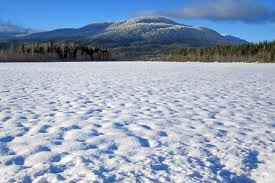The snow protects the wheat crops from freezing
During the coldest month of the year the successful winter for the crops depends directly on their phenological condition and cold durability, which are a result from the temper processes, made in the beginning of the winter season.
During the firs 10 days of the month the snow falls were of great importance, especially for the late November crops, which are in beginner stage of growth, not well prepared and not tempered for the typical January temperatures.
During the second half of December when were registered minimal temperatures of -15C -17C considerable part of the wheat crops survived because of the snow. The in time sown crops of barley and wheat met the winter in very good condition, during the phase of bratene. They are with very good cold durability as a result of the low and negative temperatures during the Fall. The crops which passed the stage of bratene will survive without any problems the periods of January with temperatures of -15C.
During most of January the expected average temperatures will keep the crops dormant. The prejected average temperatures for the month are above the critical minimums.
During the month of Janury the expected rains and snow falls will increase the humidity reserves in the 2 meters earth layer, which will create cosiderable reserve of humidity for the growth of the agricultural crops during the Spring. In result of the rainy Fall at the end of December in big part of the agrarian regions the earth reserves of humidity in the 1 meter earth layer reached levels close to the optimal earth humidity.







